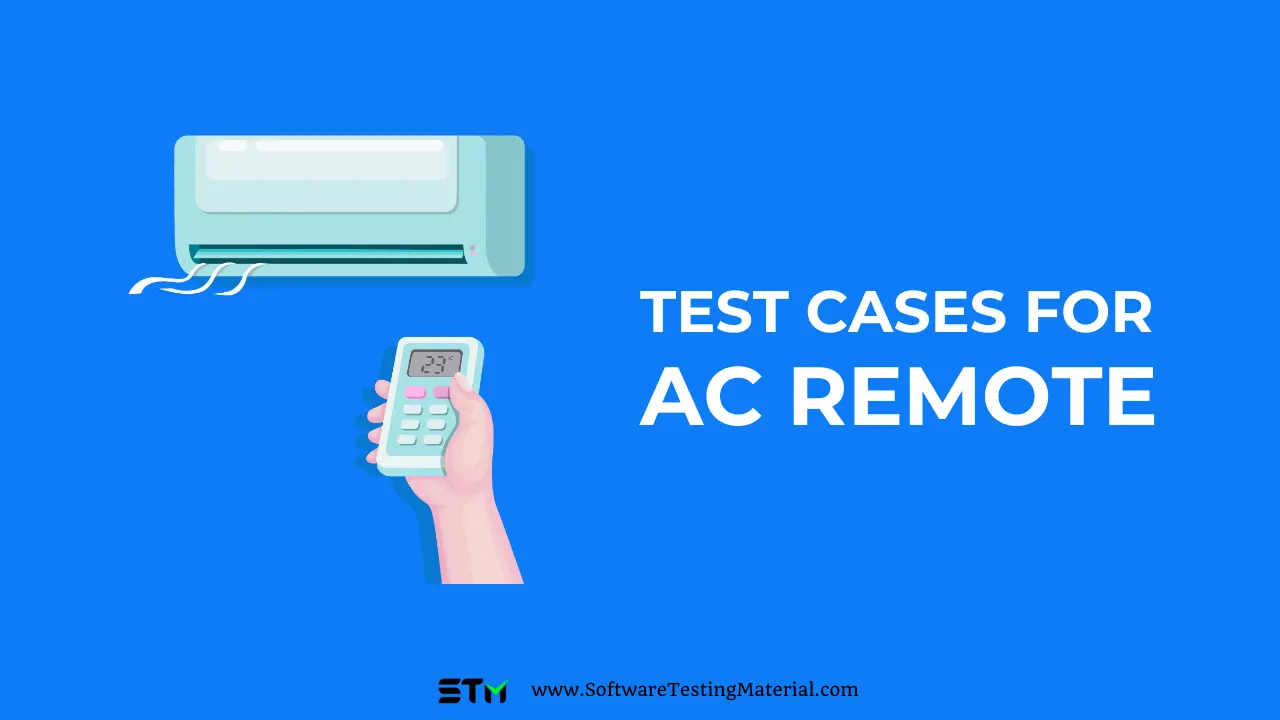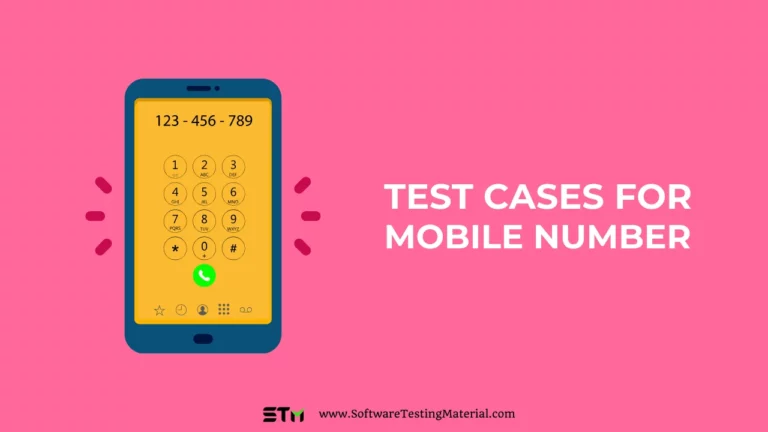50+ Test Cases for AC Remote | Test Scenarios for AC Remote
This article delves into comprehensive test cases for AC remote, providing detailed test scenarios for AC remote to ensure optimal functionality and performance.
The remote acts as the primary interface between the user and the air conditioning system, and any malfunction can lead to frustration and discomfort.
Below, I outline various test cases to ensure the robustness and reliability of the AC remote, categorized into positive, negative, functional, UI, and usability test cases.

Don’t miss: Related Test Cases
Positive Test Cases for AC Remote
Positive test cases are designed to verify that the AC remote functions correctly under normal operating conditions. Some of the key positive test cases include:
- Power Button Functionality: Verify that pressing the power button turns the AC on and off.
- Temperature Adjustment: Ensure that the remote can increase and decrease the temperature setting appropriately.
- Mode Selection: Check that the remote can switch between various modes (cool, heat, fan, auto).
- Fan Speed Control: Test the remote’s ability to adjust the fan speed (low, medium, high).
- Timer Setting: Verify that the timer feature can be set and works as intended.
- Swing Control: Ensure that the swing button on the remote can control the oscillation of the AC vents, allowing for adjustable airflow direction.
- Display Visibility: Verify that the LCD display on the remote clearly shows the current settings (temperature, mode, fan speed, etc.) under various lighting conditions.
- Battery Check Function: Confirm that the remote displays a low battery warning when the battery level is low.
- Signal Range: Test the remote’s functionality at various distances from the AC unit, ensuring it works within the specified range.
- Child Lock Feature: Ensure that the child lock feature can be activated and deactivated to prevent unintended use of the remote.
Negative Test Cases for AC Remote
Negative test cases aim to ensure the AC remote handles invalid input or extreme conditions gracefully. Some examples include:
- Low Battery Condition: Check the remote’s behavior when operating with low battery levels.
- Invalid Button Combinations: Test pressing multiple buttons simultaneously and observe the system response.
- Out of Range: Move the remote beyond its effective range and ensure it cannot control the AC.
- Button Malfunction: Simulate a stuck button and observe if the remote handles this condition without crashing.
- No Feedback: Verify the remote’s response when the AC unit is off or unresponsive.
- Interference Test: Introduce electronic devices that emit infrared signals near the remote to see if their signals interfere with the AC remote’s functionality.
- Extreme Temperatures: Expose the remote to extreme hot or cold temperatures and verify its performance and button responsiveness.
- Physical Obstruction: Place physical barriers between the remote and the AC unit and ensure that the remote cannot control the AC from behind these obstructions.
- Firmware Issues: Flash the remote with corrupted firmware files to see if it can detect the issue and if it can still operate in a fail-safe mode.
- No Line of Sight: Test the remote’s functionality when there is no direct line of sight to the AC unit, such as controlling it from another room or around a corner.
Functional Test Cases for AC Remote
Functional test cases focus on verifying that the remote performs all specified functions. They include:
- Remote Pairing: Ensure the remote can pair correctly with different AC units.
- Sleep Mode: Test the sleep mode to confirm it regulates the temperature as intended.
- Swing Function: Check if the swing function (changing airflow direction) works properly.
- Energy Saving Mode: Ensure the energy-saving mode operates as specified.
- LED Display: Validate that the LED display on the remote shows accurate information.
- Temperature Settings: Verify that the remote can accurately change and display the desired temperature settings on the AC unit.
- Fan Speed Control: Ensure that the remote can adjust the fan speeds (low, medium, high) as expected.
- Timer Function: Test the functionality of the timer setting to confirm it turns the AC unit on or off at the specified times.
- Mode Selection: Check that the remote can switch between different operational modes (cool, heat, dry, fan) correctly.
- Battery Indicator: Validate that the remote displays a warning or indicator when the batteries are low.
UI Test Cases for AC Remote
UI test cases evaluate the remote’s user interface for design and consistency. Examples are:
- Button Layout: Verify that the button layout is intuitive and user-friendly.
- Label Clarity: Ensure that all buttons and indicators are clearly labeled.
- Display Brightness: Check that the display brightness is sufficient under various lighting conditions.
- Feedback Indicators: Test the visual or audio feedback given after pressing buttons.
- Ergonomics: Assess how comfortable the remote is to hold and use.
- Button Sensitivity: Check that the buttons respond appropriately to different levels of pressure.
- Button Size: Ensure that the size of the buttons is appropriate and can be easily pressed by users with varying finger sizes.
- Backlighting: Validate that the buttons or display have adequate backlighting for visibility in low-light environments.
- Navigation: Confirm that users can easily navigate between different functions and options using the remote.
- Icon Usage: Assess that any icons used on the remote are universally understandable and correlate with their functions.
- Contrast: Check that there is sufficient contrast between button text/icons and their background for readability.
- Durability: Test the durability of the button labels to confirm that they do not wear off easily with repeated use.
- Font Size: Ensure that the font size for all text on the remote is legible for users of all age groups.
Usability Test Cases for AC Remote
Usability test cases assess how easy and satisfying the remote is to use. Important aspects include:
- Ease of Use: Verify that the remote is easy to operate by various user groups.
- Instruction Manual: Confirm that the instruction manual is clear and helpful.
- Error Messages: Test if error messages are clear and provide useful information.
- Response Time: Ensure the remote responds promptly to button presses.
- User Satisfaction: Gather user feedback on their overall experience using the remote.
- Grip and Ergonomics: Assess how comfortable and secure the remote feels when held for extended periods, ensuring it accommodates various hand sizes.
- Battery Replacement: Ensure that users can easily replace the battery without requiring tools or excessive force.
- Child Lock: Verify the functionality of any child lock features, ensuring that it is easy to activate and de-activate.
- Alternative Input Methods: Evaluate if the remote supports alternative input methods, such as voice commands, and test their effectiveness and ease of use.
- Intuitive Layout: Check if the button layout is intuitive, allowing users to efficiently locate and press buttons without confusion or error.
Conclusion
In summary, comprehensive test cases for AC remote are essential to ensure a seamless and user-friendly experience. From verifying the legibility of button labels to assessing the effectiveness of alternative input methods, each test scenario for AC remote is designed to guarantee reliability, ease of use, and high user satisfaction. By meticulously evaluating factors like response time, user satisfaction, and ergonomic design, manufacturers can create an AC remote that meets diverse consumer needs. Implementing these test cases for AC remote will not only enhance product quality but also build consumer trust and brand loyalty.
Related Posts – Test Cases
Related posts:
- How To Write a Good Defect Report
- Why Did You Choose Software Testing As A Career
- Test Plan Template Detailed Explanation
- Web Cookie Testing – Test Cases of Cookie Testing






